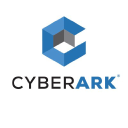Before the COVID pandemic forced most employees to work remotely, workforce identity security was already a big deal. Many industry analysts have long acknowledged that “identity is the new perimeter” alluding to the fact that business digitization, the transition of apps and infrastructure to the cloud, and the proliferation of mobile devices have blurred the security line that was traditionally protected by firewalls and VPNs.
Today, managing workforce identities and access to corporate resources is extra challenging. The digital resources that workers need to do their jobs are hosted in data centers as well as public and private clouds. At the same time, workers themselves are located across the globe and are comprised of employees, contractors, partners, and vendors. To help with this task, organizations must adopt identity and access management (IAM) solutions.
In this white paper, A Strategic Guide for Transitioning to Adaptive Access Management , market research firm Enterprise Management Associates (EMA) details an Access Management Maturity Model that will “help organizations make tactical decisions on adopting an IAM solution.” Recognizing that every organization is different and that IAM requirements vary from business to business, this paper lays out a four-phased approach to implementing the right IAM solution. Following this guide will enable organizations to determine which phase aligns with their current environments, and how to evolve to the most secure, frictionless phase of identity security, Adaptive Access.

































































